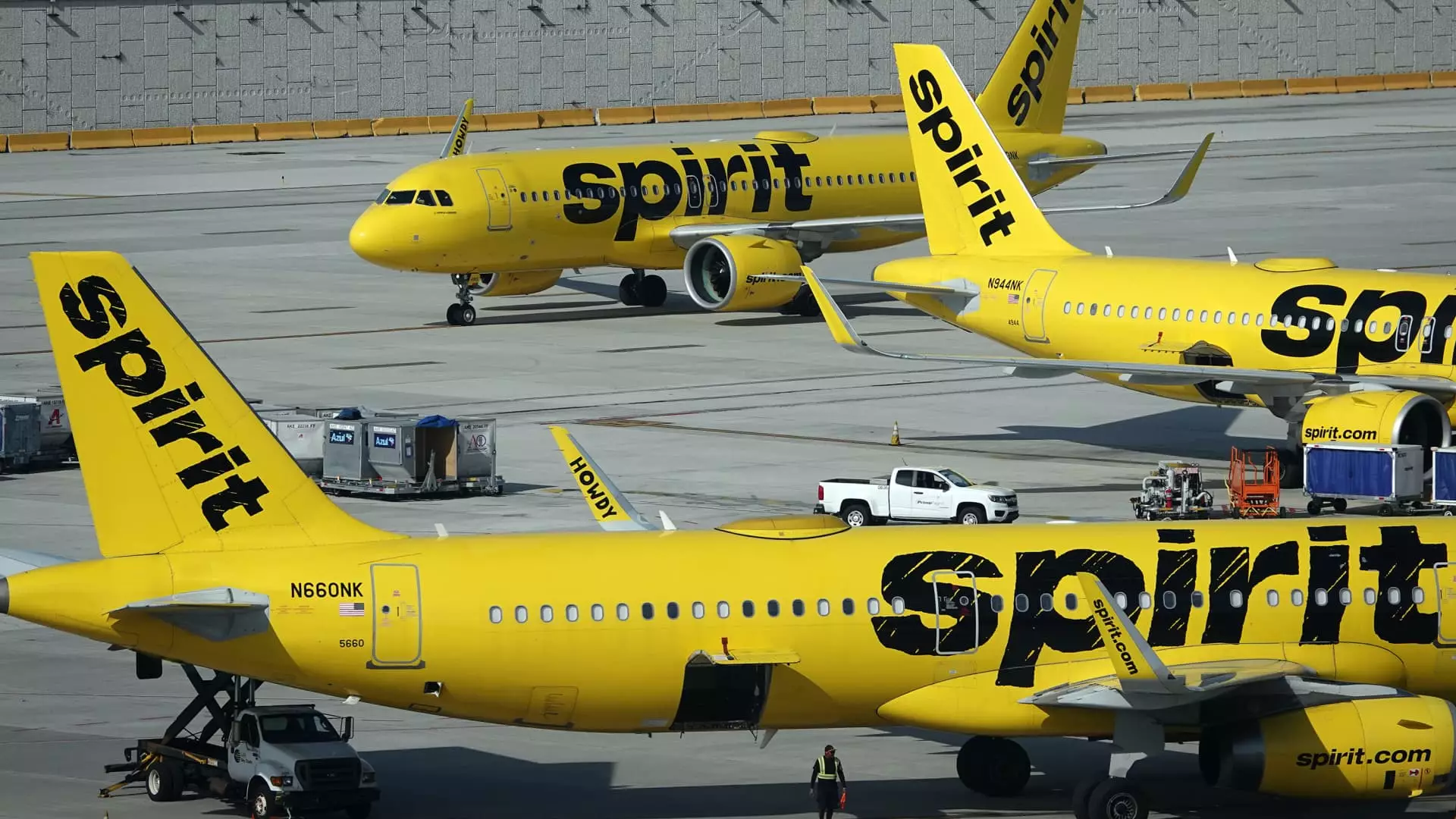Spirit Airlines recently experienced a remarkable surge in its stock price, climbing over 20% following the announcement of significant operational changes aimed at stabilizing the beleaguered airline. The decision to sell 23 older Airbus aircraft is anticipated to inject $519 million in much-needed liquidity into the company’s coffers. This strategic move marks a critical step as Spirit seeks to navigate the turbulent waters of the post-pandemic airline landscape, where financial sustainability remains a daunting challenge.
In conjunction with its asset liquidation, Spirit is also implementing a robust cost-cutting plan projected to save around $80 million, primarily through workforce reductions. While the specific number of layoffs has not been disclosed, the airline already furloughed approximately 200 pilots as part of an effort to realign its operations in response to evolving market conditions. The airline’s proactive approach to staffing—acknowledging that flight attendants may be less impacted due to voluntary leaves—highlights an effort to ensure operational efficiency in its remaining workforce.
Despite the temporary relief provided by these measures, Spirit Airlines continues to grapple with substantial financial hurdles. The airline has postponed the refinancing of over $1 billion in debt, allowing it to manage its obligations into late December. This delay suggests a recognition of the dire financial circumstances the airline faces, as it strives to regain foothold in a market that has shifted dramatically since the COVID-19 pandemic. Notably, Spirit’s shares have been adversely affected this year, plummeting over 80% following a court ruling that blocked a merger with JetBlue Airways, a development that has undoubtedly contributed to investor unease.
Looking ahead, Spirit Airlines indicated that its capacity in 2025 is expected to decline by mid-teen percentages in comparison to current levels. This forecast reflects a cautious approach to expansion, prioritizing sustainable operational practices over rapid growth, a lesson learned during the turmoil of the pandemic. The airline’s strategic pivot showcases its intention to align capacity with demand, an essential factor for long-term recovery.
Adding a layer of complexity to Spirit’s situation, discussions regarding a potential merger with Frontier Airlines have resurfaced. This dialogue could provide a much-needed lifeline for both carriers, allowing them to pool resources and enhance their competitive positioning. Although neither carrier has officially commented, the speculation alone has fueled positive investor sentiment, illustrating the precarious nature of the airline industry where survival often depends on strategic partnerships.
Spirit Airlines is at a critical juncture as it seeks to carve a path toward financial recovery. With strategic job cuts, asset sales, and a recalibrated approach to capacity management, the airline is attempting to restore investor confidence and stabilize its operations. Nonetheless, its future remains uncertain amid ongoing financial challenges and industry turbulence. As Spirit continues its efforts to redefine itself, the upcoming months will be pivotal in determining whether these initiatives can successfully usher the airline back to profitability.

